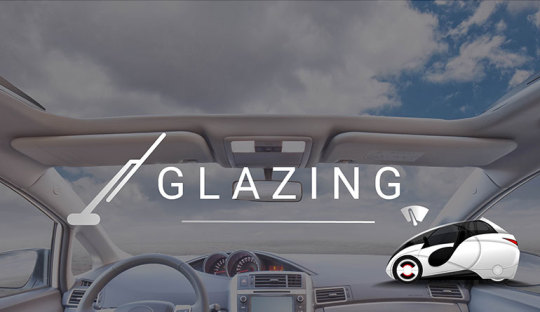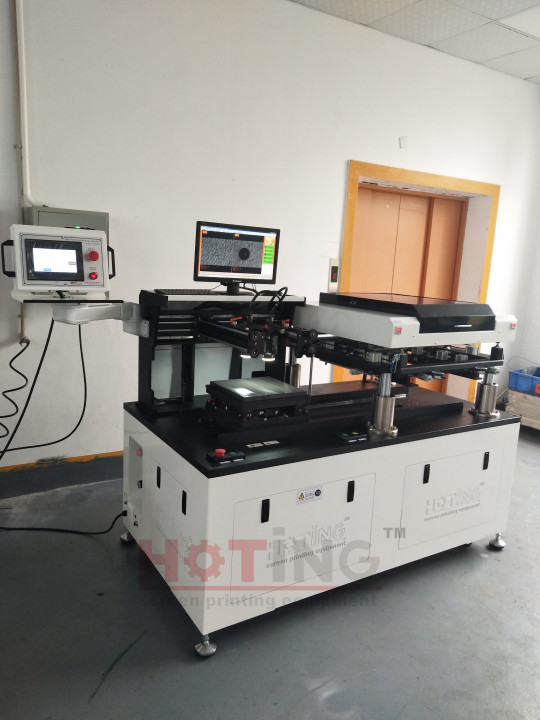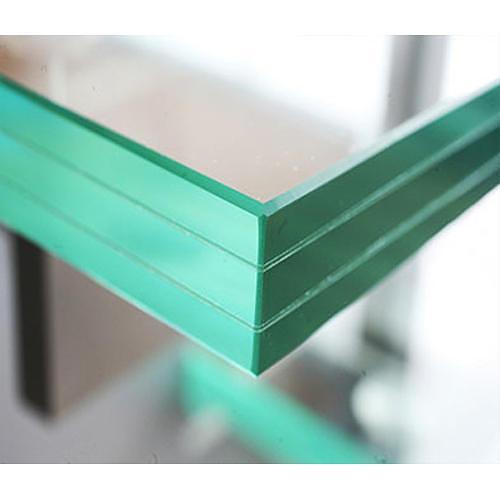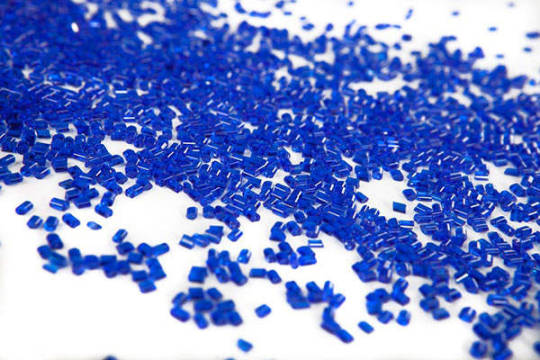#Automotive Glazing
Text
#Automotive Glass Market#Auto Glass#OEMs Automotive Glass#Automotive Aftermarket Glass#Automotive Glazing#Automotive Smart Glass#Glass Cars
0 notes
Text
Automotive Glazing Market To Witness the Highest Growth Globally in Coming Years

The report begins with an overview of the Automotive Glazing Market and presents throughout its development. It provides a comprehensive analysis of all regional and key player segments providing closer insights into current market conditions and future market opportunities, along with drivers, trend segments, consumer behavior, price factors, and market performance and estimates. Forecast market information, SWOT analysis, Automotive Glazing Market scenario, and feasibility study are the important aspects analyzed in this report.
The Automotive Glazing Market is experiencing robust growth driven by the expanding globally. The Automotive Glazing Market is poised for substantial growth as manufacturers across various industries embrace automation to enhance productivity, quality, and agility in their production processes. Automotive Glazing Market leverage robotics, machine vision, and advanced control technologies to streamline assembly tasks, reduce labor costs, and minimize errors. With increasing demand for customized products, shorter product lifecycles, and labor shortages, there is a growing need for flexible and scalable automation solutions. As technology advances and automation becomes more accessible, the adoption of automated assembly systems is expected to accelerate, driving market growth and innovation in manufacturing. Automotive Glazing Market Size, Share & Industry Analysis, By Product Type (Tempered Glass, Laminated Glass, Polycarbonate), By Application Type (Front Windshield, Rear Windshield, Sidelites, Sunroof) And Regional Forecast 2021-2028
Get Sample PDF Report: https://www.fortunebusinessinsights.com/enquiry/request-sample-pdf/105491
Key Strategies
Key strategies in the Automotive Glazing Market revolve around optimizing production efficiency, quality, and flexibility. Integration of advanced robotics and machine vision technologies streamlines assembly processes, reducing cycle times and error rates. Customization options cater to diverse product requirements and manufacturing environments, ensuring solution scalability and adaptability. Collaboration with industry partners and automation experts fosters innovation and addresses evolving customer needs and market trends. Moreover, investment in employee training and skill development facilitates seamless integration and operation of Automotive Glazing Market. By prioritizing these strategies, manufacturers can enhance competitiveness, accelerate time-to-market, and drive sustainable growth in the Automotive Glazing Market.
Major Automotive Glazing Market Manufacturers covered in the market report include:
Major players operating in the global Automotive Glazing market include Covestro AG, Chi Mei Corporation, SABIC, KRD Sicherheitstechnik, Mitsubishi, Webasto SE, Idemitsu, Glaston Corporation among others.
Automotive manufacturers continue to work to develop better, lighter, and safer auto parts, as greater air pollution and carbon emissions issues are having an undisputed impact on the automotive industry. This impact has led manufacturers in the global automotive glass market to also take measures to improve existing products and develop new products designed to reduce the weight of cars, thereby making them more fuel-efficient.
Trends Analysis
The Automotive Glazing Market is experiencing rapid expansion fueled by the manufacturing industry's pursuit of efficiency and productivity gains. Key trends include the adoption of collaborative robotics and advanced automation technologies to streamline assembly processes and reduce labor costs. With the rise of Industry 4.0 initiatives, manufacturers are investing in flexible and scalable Automotive Glazing Market capable of handling diverse product portfolios. Moreover, advancements in machine vision and AI-driven quality control are enhancing production throughput and ensuring product consistency. The emphasis on sustainability and lean manufacturing principles is driving innovation in energy-efficient and eco-friendly Automotive Glazing Market Solutions.
Regions Included in this Automotive Glazing Market Report are as follows:
North America [U.S., Canada, Mexico]
Europe [Germany, UK, France, Italy, Rest of Europe]
Asia-Pacific [China, India, Japan, South Korea, Southeast Asia, Australia, Rest of Asia Pacific]
South America [Brazil, Argentina, Rest of Latin America]
Middle East & Africa [GCC, North Africa, South Africa, Rest of the Middle East and Africa]
Significant Features that are under offering and key highlights of the reports:
- Detailed overview of the Automotive Glazing Market.
- Changing the Automotive Glazing Market dynamics of the industry.
- In-depth market segmentation by Type, Application, etc.
- Historical, current, and projected Automotive Glazing Market size in terms of volume and value.
- Recent industry trends and developments.
- Competitive landscape of the Automotive Glazing Market.
- Strategies of key players and product offerings.
- Potential and niche segments/regions exhibiting promising growth.
Frequently Asked Questions (FAQs):
► What is the current market scenario?
► What was the historical demand scenario, and forecast outlook from 2024 to 2030?
► What are the key market dynamics influencing growth in the Global Automotive Glazing Market?
► Who are the prominent players in the Global Automotive Glazing Market?
► What is the consumer perspective in the Global Automotive Glazing Market?
► What are the key demand-side and supply-side trends in the Global Automotive Glazing Market?
► What are the largest and the fastest-growing geographies?
► Which segment dominated and which segment is expected to grow fastest?
► What was the COVID-19 impact on the Global Automotive Glazing Market?
Table Of Contents:
1 Market Overview
1.1 Automotive Glazing Market Introduction
1.2 Market Analysis by Type
1.3 Market Analysis by Applications
1.4 Market Analysis by Regions
1.4.1 North America (United States, Canada and Mexico)
1.4.1.1 United States Market States and Outlook
1.4.1.2 Canada Market States and Outlook
1.4.1.3 Mexico Market States and Outlook
1.4.2 Europe (Germany, France, UK, Russia and Italy)
1.4.2.1 Germany Market States and Outlook
1.4.2.2 France Market States and Outlook
1.4.2.3 UK Market States and Outlook
1.4.2.4 Russia Market States and Outlook
1.4.2.5 Italy Market States and Outlook
1.4.3 Asia-Pacific (China, Japan, Korea, India and Southeast Asia)
1.4.3.1 China Market States and Outlook
1.4.3.2 Japan Market States and Outlook
1.4.3.3 Korea Market States and Outlook
1.4.3.4 India Market States and Outlook
1.4.3.5 Southeast Asia Market States and Outlook
1.4.4 South America, Middle East and Africa
1.4.4.1 Brazil Market States and Outlook
1.4.4.2 Egypt Market States and Outlook
1.4.4.3 Saudi Arabia Market States and Outlook
1.4.4.4 South Africa Market States and Outlook
1.5 Market Dynamics
1.5.1 Market Opportunities
1.5.2 Market Risk
1.5.3 Market Driving Force
2 Manufacturers Profiles
Continued…
About Us:
Fortune Business Insights™ delivers accurate data and innovative corporate analysis, helping organizations of all sizes make appropriate decisions. We tailor novel solutions for our clients, assisting them to address various challenges distinct to their businesses. Our aim is to empower them with holistic market intelligence, providing a granular overview of the market they are operating in.
Contact Us:
Fortune Business Insights™ Pvt. Ltd.
308, Supreme Headquarters,
Survey No. 36, Baner,
Pune-Bangalore Highway,
Pune - 411045, Maharashtra, India.
Phone:
US:+1 424 253 0390
UK: +44 2071 939123
APAC: +91 744 740 1245
#Automotive Glazing Market#Automotive Glazing Market Share#Automotive Glazing Market Size#Automotive Glazing Market Trends#Automotive Glazing Market Growth
0 notes
Text







Thick film screen printer with CCD auto registration delivery never stop. This screen printer widely used in Ecigarette lighter ceramic heater sheet, Porous ceramic, Ceramic capacitors, Resistors, Thick film circuits, Ceramic circuits, Filters, Glazed potentiometers, Dielectric antennas, Ceramic metallization, RFID, Automotive oil level sensors, Tension sensor, Air quality sensors, Pressure sensors( Piezoresistive, Capacitive), Integrated LED lamp holders, Technical indicators, Piezoelectric ceramic components, LED ceramic substrates, LTCC, MLCC, Optical filter, Ceramic thick film circuit, Solar wafer, Chip components and Electronic parts printing process manufacturing. #printedelectronics #screenprinting
#Thick film screen printer with CCD auto registration delivery never stop. This screen printer widely used in Ecigarette lighter ceramic heat#Porous ceramic#Ceramic capacitors#Resistors#Thick film circuits#Ceramic circuits#Filters#Glazed potentiometers#Dielectric antennas#Ceramic metallization#RFID#Automotive oil level sensors#Tension sensor#Air quality sensors#Pressure sensors( Piezoresistive#Capacitive)#Integrated LED lamp holders#Technical indicators#Piezoelectric ceramic components#LED ceramic substrates#LTCC#MLCC#Optical filter#Ceramic thick film circuit#Solar wafer#Chip components and Electronic parts printing process manufacturing.#printedelectronics#screenprinting
0 notes
Photo










ASA 411 GT
An ASA is a rare appearance, as it was produced in low numbers. If you're lucky, you may run into a rare 1000 GT, but the chance that you will find the ultra rare 411 Berlinetta is next to impossible.
ASA (Autoconstruzioni Societa per Azioni) was a relatively unknown Milanese manufacturer, who, despite its short existence from 1962 to 1967, makes up a special piece of the Italian automotive history. Enzo Ferrari laid the foundation. At the end of the 1950s, he set out to place a smaller car on the market and saw to the development of the "Ferrarina" - the "Small Ferrari". Big names were involved in the development of the car. The bodywork was designed by Giugiaro at Bertone, its tubular frame was created by Bizzarini, and the mechanical part including the engine came from Ferrari itself. After completion of the project, Enzo Ferrari, afraid of reputation damage, stopped short of placing the mini Ferrari on the market under his name. Orionzo de Nora, an Italian industrial, took over the project from Ferrari and founded ASA in 1962. At the 1962 Turin Motor Show, ASA made its world debut with the ASA 1000 GT. The 1000 GT delivered a brilliant performance with the 1032 cc engine supplying 91 hp and a top speed of 190 km/h. In the early 1960s, only 2 litre sport engines could deliver such results. However, the 1000 GT had one huge disadvantage: its extravagant cost. Car sales did not really take off, and in total just over 100 examples were delivered. At the end of 1965, ASA, ailing by then, tried to revive the brand with the introduction of the 411 Berlinetta, a further development of the 1000 GT. The engine size of the 411 was increased to 1092 cc and the car was now bodied in aluminium. It is said that only four examples were built of the 411 Berlinetta, three of which were used for competition purposes and equipped with synthetic glazing for weight savings. The only 411 Berlinetta which was not used for races, but delivered for regular driving and fitted with glass windows, is this car.
95 notes
·
View notes
Text

Okay, it’s that time again, I know this is a automotive themed page, but a can guarantee you there are some cars in the parking lot of that place (The Beverly Hills Hotel, I believe) anyway we have a somewhat Jealous looking Sophia Loren casting a unapproving glaze at the Fabulous Miss Jayne Mansfield.
2 notes
·
View notes
Text
0 notes
Text

𝐄𝐱𝐩𝐥𝐨𝐫𝐢𝐧𝐠 𝐭𝐡𝐞 𝐃𝐲𝐧𝐚𝐦𝐢𝐜 𝐖𝐨𝐫𝐥𝐝 𝐨𝐟 𝐭𝐡𝐞 𝐅𝐥𝐚𝐭 𝐆𝐥𝐚𝐬𝐬 𝐌𝐚𝐫𝐤𝐞𝐭
The global 𝐅𝐥𝐚𝐭 𝐆𝐥𝐚𝐬𝐬 𝐌𝐚𝐫𝐤𝐞𝐭 is experiencing remarkable growth and transformation, driven by technological advancements, sustainability trends, and increased demand across various sectors.
𝐆𝐞𝐭 𝐚 𝐅𝐑𝐄𝐄 𝐒𝐚𝐦𝐩𝐥𝐞: https://www.nextmsc.com/flat-glass-market/request-sample
𝐊𝐞𝐲 𝐈𝐧𝐬𝐢𝐠𝐡𝐭𝐬:
𝙈𝙖𝙧𝙠𝙚𝙩 𝙂𝙧𝙤𝙬𝙩𝙝: The global flat glass market, as per @next is projected to reach a value of $198 billion by 2030, with a CAGR of 6% from 2024-2030. This growth is fueled by rising demand in construction, automotive, and solar energy sectors.
𝙏𝙚𝙘𝙝𝙣𝙤𝙡𝙤𝙜𝙞𝙘𝙖𝙡 𝘼𝙙𝙫𝙖𝙣𝙘𝙚𝙢𝙚𝙣𝙩𝙨: Innovations such as smart glass and energy-efficient glazing are revolutionizing the industry. These advancements are not only enhancing the performance of flat glass but also contributing to energy savings and sustainability.
𝙎𝙪𝙨𝙩𝙖𝙞𝙣𝙖𝙗𝙞𝙡𝙞𝙩𝙮 𝙁𝙤𝙘𝙪𝙨: As the world shifts towards greener solutions, flat glass manufacturers are adopting eco-friendly practices. Recyclable materials and energy-efficient production processes are becoming standard, aligning with global sustainability goals.
𝘼𝙥𝙥𝙡𝙞𝙘𝙖𝙩𝙞𝙤𝙣𝙨 𝙞𝙣 𝙀𝙢𝙚𝙧𝙜𝙞𝙣𝙜 𝙈𝙖𝙧𝙠𝙚𝙩𝙨: Rapid urbanization and infrastructure development in emerging economies are creating significant opportunities. The construction industry, in particular, is a major consumer of flat glass, using it for windows, facades, and interior design.
𝐀𝐜𝐜𝐞𝐬𝐬 𝐅𝐮𝐥𝐥 𝐑𝐞𝐩𝐨𝐫𝐭: https://www.nextmsc.com/report/flat-glass-market
𝐖𝐡𝐚𝐭'𝐬 𝐃𝐫𝐢𝐯𝐢𝐧𝐠 𝐃𝐞𝐦𝐚𝐧𝐝?
𝘾𝙤𝙣𝙨𝙩𝙧𝙪𝙘𝙩𝙞𝙤𝙣 𝘽𝙤𝙤𝙢: Modern architecture heavily relies on flat glass for aesthetic and functional purposes.
𝘼𝙪𝙩𝙤𝙢𝙤𝙩𝙞𝙫𝙚 𝙄𝙣𝙙𝙪𝙨𝙩𝙧𝙮: Enhanced safety and design features in vehicles are increasing the use of flat glass.
𝙎𝙤𝙡𝙖𝙧 𝙀𝙣𝙚𝙧𝙜𝙮: The push for renewable energy sources is driving demand for solar glass used in photovoltaic panels.
𝐈𝐧𝐝𝐮𝐬𝐭𝐫𝐲 𝐋𝐞𝐚𝐝𝐞𝐫𝐬: Companies like AGC, Cevital Group, Euroglas, Guardian Industries, Schott, and Nippon Sheet Glass, are at the forefront, setting trends and leading innovations in the flat glass market.
Keeping an eye on emerging trends and adapting to market needs will be key for businesses in this space.
0 notes
Text
The Ultimate Guide to Glass Replacement: Everything You Need to Know

Whether you're dealing with a cracked window, a shattered door pane, or a broken car windshield, glass replacement is an essential service that ensures safety, security, and aesthetic appeal. In this comprehensive guide, we will walk you through everything you need to know about glass replacement, from identifying when it's necessary to choosing the right type of glass and understanding the replacement process.
When Is Glass Replacement Necessary?
Cracks and Chips
Small cracks and chips in glass can compromise its structural integrity. These minor damages can quickly turn into major problems, especially with temperature changes or impacts. In most cases, if the crack is larger than a dollar bill or if the chip is deep, replacement is recommended over repair.
Shattered or Broken Glass
This is the most obvious scenario. Broken glass poses significant safety risks due to sharp edges. Whether it's a window, door, or windshield, replacing shattered glass is essential to prevent injuries and restore security.
Foggy or Condensation between Panes
For double or triple-pane windows, fogging or condensation between the panes indicates that the seal has failed. This reduces the window's insulating capabilities, leading to higher energy bills and reduced comfort. Replacement is often the best solution to restore insulation and clarity.
Old or Inefficient Windows
Older windows may not provide adequate insulation, leading to drafts and higher energy costs. Modern glass technology offers improved energy efficiency, UV protection, and noise reduction. Upgrading old windows can enhance comfort and reduce energy expenses.
Types of Glass for Replacement
Annealed Glass
Annealed glass is the most common type of glass, used in many residential windows. It's affordable but not very strong, and when it breaks, it shatters into large, sharp pieces. It's suitable for areas where safety is less of a concern.
Tempered Glass
Tempered glass is much stronger than annealed glass and, when it breaks, it shatters into small, blunt pieces, reducing the risk of injury. It's ideal for doors, showers, and areas with high impact risk.
Laminated Glass
Laminated glass consists of two or more layers of glass bonded with an interlayer. It holds together when shattered, making it a good choice for windshields, skylights, and any situation requiring enhanced security and noise reduction.
Insulated Glass Units (IGUs)
IGUs, also known as double or triple-pane windows, consist of two or more glass panes separated by a spacer and sealed to create an insulating air space. They offer excellent thermal performance and are perfect for energy-efficient homes.
The Glass Replacement Process
Assessment
A professional will assess the damage to determine if replacement is necessary. They will also measure the dimensions and identify the type of glass needed.
Removal of Old Glass
The damaged glass is carefully removed, ensuring all shards are cleared away. For window panes, this often involves removing the window sash and any old glazing putty or clips.
Installation of New Glass
The new glass is cut to size, if not pre-ordered to fit. It's then carefully installed, secured with glazing points or clips, and sealed with putty or silicone to ensure a weather-tight fit.
Final Inspection
The installation is inspected to ensure proper fit and finish. Any final adjustments are made, and the area is cleaned up.
DIY vs. Professional Glass Replacement
DIY Glass Replacement
For small projects like single-pane windows, DIY replacement can be cost-effective. However, it requires precision, proper tools, and safety measures. Mistakes can lead to further damage or injury, so it's important to have a clear understanding of the process.
Professional Glass Replacement
For large windows, doors, or automotive glass, professional replacement is recommended. Professionals have the expertise, tools, and materials to perform the job safely and efficiently. They can also provide warranties and ensure compliance with building codes.
Choosing the Right Glass Replacement Service
When selecting a glass replacement service, consider the following:
Experience and Expertise: Look for a company with a solid track record and positive reviews.
Quality of Materials: Ensure they use high-quality glass that meets safety and efficiency standards.
Warranty and Insurance: Check if they offer warranties on their work and are insured against accidents.
Cost Estimates: Get multiple quotes to compare prices, but be wary of prices that seem too good to be true.
0 notes
Text
Methyl Meth Acrylate Prices, Price Trend, Pricing, News, Analysis & Forecast

Methyl meth Acrylate prices are a pivotal indicator within the chemical industry, influencing various sectors such as construction, automotive, and healthcare. The price dynamics of methyl methacrylate, commonly abbreviated as MMA, are shaped by a multitude of factors, including supply and demand dynamics, raw material costs, geopolitical events, and regulatory changes. Understanding these intricate interplays is crucial for businesses reliant on MMA, as even slight fluctuations can have significant ramifications on production costs and profitability.
One of the primary drivers of MMA prices is its supply-demand balance. As a key component in the production of polymethyl methacrylate (PMMA) and other acrylic resins, MMA demand is heavily influenced by construction activities, particularly in applications like architectural glazing, signage, and sanitary ware. Moreover, the automotive industry's demand for PMMA for applications such as car windows and light covers adds another layer of demand dynamics. Fluctuations in these sectors can directly impact the demand for MMA, consequently affecting its prices.
Get Real Time Prices of Methyl Methacrylate: https://www.chemanalyst.com/Pricing-data/methyl-methacrylate-1288Raw material costs also play a critical role in determining MMA prices. Methanol, a primary raw material for MMA production, accounts for a substantial portion of the production costs. Therefore, any fluctuations in methanol prices due to factors like feedstock availability, energy prices, or transportation costs can directly impact MMA prices. Additionally, the prices of other key raw materials such as acetone and ethylene, which are used in the production process, contribute to the overall cost structure of MMA.
Geopolitical events and regulatory changes introduce additional uncertainties into the MMA market. Supply disruptions caused by geopolitical tensions or trade disputes can lead to short-term price spikes or supply shortages. Regulatory changes related to environmental policies or safety standards may necessitate adjustments in production processes, potentially affecting costs and prices. For instance, stricter environmental regulations might require investments in cleaner production technologies, adding to production costs and influencing prices.
Market sentiment and speculative activities also contribute to price volatility in the MMA market. Traders and investors closely monitor factors such as inventory levels, production capacity expansions, and macroeconomic indicators to anticipate future price movements. Speculative trading based on such forecasts can amplify price fluctuations, leading to both short-term spikes and corrections in MMA prices.
In recent years, the global MMA market has witnessed several notable trends that have impacted prices. The growing demand for lightweight materials in automotive and aerospace industries has spurred increased consumption of PMMA, driving up demand for MMA. Additionally, technological advancements in MMA production processes, such as the development of more energy-efficient and cost-effective methods, have influenced supply dynamics and production costs.
Environmental sustainability concerns have also emerged as a significant factor shaping the MMA market. With increasing pressure to reduce carbon emissions and minimize environmental footprint, manufacturers are exploring renewable feedstocks and greener production methods for MMA. While these initiatives hold the promise of long-term sustainability, they may entail higher initial investments and production costs, potentially impacting MMA prices in the short term.
In conclusion, methyl methacrylate prices are subject to a complex interplay of factors, including supply-demand dynamics, raw material costs, geopolitical events, regulatory changes, market sentiment, and technological advancements. Businesses operating in sectors reliant on MMA must stay vigilant and adapt to these evolving market dynamics to effectively manage price risks and maintain competitiveness. Additionally, collaboration across the value chain, including producers, suppliers, and end-users, can help mitigate uncertainties and foster a more stable MMA market in the long run.
Get Real Time Prices of Methyl Meth Acrylate: https://www.chemanalyst.com/Pricing-data/methyl-methacrylate-1288
Contact Us:
ChemAnalyst
GmbH - S-01, 2.floor, Subbelrather Straße,
15a Cologne, 50823, Germany
Call: +49-221-6505-8833
Email: [email protected]
Website: https://www.chemanalyst.com
0 notes
Text
#Automotive Glass Market#Auto Glass#OEMs Automotive Glass#Automotive Aftermarket Glass#Automotive Glazing#Automotive Smart Glass#Glass Cars
0 notes
Text
Exploring the Advantages of Laminated Safety Glass
In the realm of architectural and automotive glazing, safety is paramount. Enter laminated safety glass – a revolutionary material that offers unparalleled protection, durability, and aesthetic appeal. In this blog, we'll delve into the myriad benefits of laminated safety glass and why it's the ultimate choice for a wide range of applications.

What is Laminated Safety Glass?
Laminated safety glass is a composite material composed of two or more layers of glass bonded together with an interlayer of polyvinyl butyral (PVB) or ethylene-vinyl acetate (EVA) resin. This construction results in a strong and resilient glass panel that provides enhanced safety and security compared to traditional annealed or tempered glass.
Superior Safety and Security
One of the primary advantages of laminated safety glass is its ability to withstand impact and resist shattering upon breakage. In the event of an impact, the interlayer holds the glass fragments together, preventing them from scattering and reducing the risk of injury from sharp edges or flying debris. This makes laminated safety glass an ideal choice for applications where safety is paramount, such as windows, doors, partitions, and automotive windshields.
Protection Against Forced Entry and Burglary
In addition to its safety benefits, laminated safety glass also provides enhanced security against forced entry and burglary. The tough interlayer acts as a barrier that is difficult to penetrate, making it significantly more challenging for intruders to gain unauthorized access to buildings or vehicles. This added layer of protection offers peace of mind for homeowners, business owners, and vehicle owners alike.
UV Protection and Sound Insulation
Laminated safety glass can also provide protection against harmful ultraviolet (UV) radiation from the sun. By incorporating UV-blocking additives into the interlayer or using tinted glass panels, laminated safety glass helps reduce UV exposure indoors, protecting occupants and furnishings from sun damage and fading. Additionally, the viscoelastic properties of the interlayer contribute to sound damping, making laminated safety glass an effective solution for reducing noise transmission and improving acoustic comfort in interior spaces.
Design Versatility and Aesthetic Appeal
Despite its robust safety and security features, laminated safety glass offers a high degree of design versatility and aesthetic appeal. Available in a wide range of thicknesses, sizes, and finishes, laminated safety glass can be customized to suit virtually any architectural or design requirement. Whether you prefer clear, tinted, frosted, or patterned glass, laminated safety glass can enhance the visual appeal of any space while providing peace of mind.
Conclusion: The Ultimate Choice for Safety and Style
In conclusion, laminated safety glass offers a winning combination of safety, security, durability, and aesthetic appeal that makes it the ultimate choice for a variety of applications. Whether you're looking to enhance the safety and security of your home, office, or vehicle, or simply add a touch of style to your space, laminated safety glass delivers unmatched performance and peace of mind. Consider incorporating laminated safety glass into your next project and experience the benefits firsthand.
0 notes
Text
Analyzing the Global Methyl Methacrylate Market: Trends, Growth Drivers, and Industry Insights

Methyl Methacrylate: Properties, Synthesis and Industrial Uses of Methacrylate
Chemical Properties
Methyl methacrylate, commonly known as MMA, is an organic compound with the formula C5H8O2. It is a colorless, volatile liquid with an acrid odor. MMA is moderately soluble in water but highly soluble in most organic solvents such as alcohol, ether, acetone and dichloromethane.
The primary property of MMA is that it undergoes free radical polymerization, which leads to the formation of PMMA. During polymerization, the carbon double bonds in MMA monomers react to form long chains or polymers. This conversion of a low-molecular-weight liquid to a high-molecular-weight solid plastic through polymerization is the reason why MMA finds numerous industrial applications.
MMA polymerizes via a free radical mechanism initiated by heat, light or chemicals like peroxides. The polymerization is exothermic and needs to be controlled carefully. During industrial production of PMMA, monomers, polymers and residual reactants must be kept separate to avoid premature or uncontrolled polymerization.
Synthesis of MMA
Commercially, MMA is produced through the acetone cyanohydrin process, which involves the reaction of acetone and hydrogen cyanide to form acetone cyanohydrin. This intermediate is then reacted with methanol in the presence of an acid catalyst to yield MMA.
CH3COCH3 + HCN → CH3C(OH)CN + H2O
CH3C(OH)CN + CH3OH → CH2=C(CH3)COOCH3 + H2O
The overall reaction involves the replacement of the nitrile group in acetone cyanohydrin by a methoxy carbonyl group through acid-catalyzed esterification. Major process parameters are the selection of acid catalyst, temperature control and recovery of byproducts.
MMA can also be synthesized through the methacrylic acid process, which involves the carbonylation of acetylene to methacrylic acid, followed by esterification with methanol. However, the acetone cyanohydrin process is preferred industrially due to lower costs.
Industrial Uses of MMA
Some of the major industrial applications of MMA and PMMA are:
Plexiglas and Optical Materials - PMMA in the form of Plexiglas sheets finds widespread use as an alternative to glass in lighting fixtures, transport equipment, window panes and optical instruments. It offers advantages of lighter weight, thermal insulation and durability.
Automotive and Aircraft Industries - MMA is used to manufacture canopies, light covers, glazing panels and translucent roof panels for aircraft, vehicles, trains and boats. PMMA offers crash resistance, high optical clarity and weatherability.
Paints and Coatings - MMA or blends of MMA and styrene are used as monomers in paints and coatings for their resistance to solvents, weathering and aging. Applications include automotive finishes and industrial flooring.
Adhesives - MMA based adhesives bond plastics, metals, wood, ceramics and composites. They offer high adhesion strengths along with heat, chemical and water resistance.
Acrylic Fibers - Polymerization of MMA leads to acrylic fibers used in textiles and apparels. They mimic the feel and appearance of wool but are cheaper and easier to maintain.
Medical Devices - PMMA is approved by FDA for applications such as bone cement, breast implants and contact lenses due to its biocompatibility and durability.
In summary, methyl methacrylate serves as a vital building block monomer in the synthesis of PMMA, which then finds diverse industrial applications leveraging its outstanding material properties. Strict process control during MMA production and polymerization is needed for safety and maximal output.
0 notes
Text
Automotive Polycarbonate Glazing Market Size, Share, Trends, Growth And Forecast To 2032
http://dlvr.it/T5gmDg
0 notes
Text
Silica Flour Market 2023-2031: Flourishing Trends and Promising Prospects
The silica flour market is poised for robust growth between 2023 and 2031, driven by increasing demand across various industries globally. Silica flour, a finely ground silica product, finds extensive applications in construction, paints and coatings, ceramics, foundry, chemicals, and other sectors owing to its excellent properties such as high purity, chemical inertness, and abrasion resistance.
The global silica flour market is witnessing steady expansion, propelled by the escalating demand for high-quality silica in diverse industrial applications. With advancements in technology and growing awareness about the benefits of silica flour, the market is experiencing a surge in demand worldwide.
Download Sample of the Report: https://www.transparencymarketresearch.com/sample/sample.php?flag=S&rep_id=6988
The silica flour market is expected to witness significant growth during the forecast period, with a compound annual growth rate (CAGR) projected to be substantial. Factors such as increasing construction activities, expanding automotive production, and rising demand for specialty chemicals are driving the market's growth trajectory.
Market Segmentation: The silica flour market can be segmented based on several factors:
By Service Type: Manufacturing, Processing, Consulting, Others
By Sourcing Type: Natural, Synthetic
By Application: Fiberglass, Sodium Silicate, Reinforcing Filler, Ceramic Frits & Glaze, Foundry Work, Glass & Clay Production, Oilwell Cement, Others
By Industry Vertical: Construction, Foundry, Chemicals, Glass & Ceramics, Oil & Gas, Automotive, Others
By Region: North America, Europe, Asia Pacific, Latin America, Middle East & Africa
Regional Analysis:
North America: Technological advancements and robust infrastructure development drive the silica flour market in this region.
Europe: Stringent regulations promoting sustainable construction practices and increasing automotive production bolster market growth.
Asia Pacific: Rapid industrialization, urbanization, and infrastructure development initiatives in emerging economies such as China and India contribute to significant market expansion.
Latin America, Middle East & Africa: Increasing investments in construction and industrial sectors propel the demand for silica flour in these regions.
Market Drivers and Challenges:
Drivers:
Growing construction activities, expanding automotive and foundry industries, increasing demand for specialty chemicals.
Challenges:
Fluctuating raw material prices, environmental concerns related to silica dust, and stringent regulatory frameworks.
Market Trends:
Increasing adoption of eco-friendly silica flour products.
Rising investments in research and development for product innovation.
Emergence of advanced processing technologies for improved product quality.
Future Outlook: The silica flour market is poised for continued growth in the coming years, driven by burgeoning demand across diverse industrial sectors. Technological advancements, coupled with increasing emphasis on sustainable practices, are expected to shape the future landscape of the market positively.
Key Market Study Points:
Understanding the demand-supply dynamics of silica flour across different industries.
Analyzing regional market trends and identifying growth opportunities.
Assessing competitive strategies adopted by key market players.
Monitoring regulatory developments and environmental concerns related to silica flour production and usage.
Competitive Landscape: The silica flour market is characterized by the presence of several key players, including (mention a few companies). These companies are focusing on product innovation, strategic partnerships, and mergers and acquisitions to strengthen their market position and gain a competitive edge.
Recent Developments:
Introduction of eco-friendly silica flour products.
Strategic collaborations for expanding market reach.
Investments in research and development for product diversification and enhancement.
About Transparency Market Research
Transparency Market Research, a global market research company registered in Wilmington, Delaware, United States, provides custom research and consulting services. Our exclusive blend of quantitative forecasting and trends analysis provides forward-looking insights for thousands of decision-makers. Our experienced team of Analysts, Researchers, and Consultants use proprietary data sources and various tools & techniques to gather and analyze information.
Our data repository is continuously updated and revised by a team of research experts so that it always reflects the latest trends and information. With a broad research and analysis capability, Transparency Market Research employs rigorous primary and secondary research techniques in developing distinctive data sets and research material for business reports.
Contact:
Transparency Market Research Inc.
CORPORATE HEADQUARTER DOWNTOWN,
1000 N. West Street,
Suite 1200, Wilmington, Delaware 19801 USA
Tel: +1-518-618-1030
USA - Canada Toll Free: 866-552-3453
Website: https://www.transparencymarketresearch.com
0 notes
Text
Evolution and Projections in the Global Polymethyl Methacrylate (PMMA) Market
Polymethyl Methacrylate (PMMA) has established itself as a versatile and highly sought-after polymer in various industries due to its exceptional optical clarity, impact resistance, weatherability, and ease of processing. This article dives into the current trends, applications, challenges, and future projections for the global PMMA market.
Current Market Landscape:
Diverse Applications Across Industries:
PMMA finds extensive use in automotive, construction, electronics, healthcare, signage, lighting, and consumer goods sectors. Its optical properties make it an ideal alternative to glass in many applications Polymethyl Methacrylate (PMMA) Market.
Growth in Construction and Architecture:
PMMA's use in architectural glazing, skylights, and façade panels has seen a steady rise due to its lightweight nature, UV resistance, and design flexibility, contributing to energy-efficient building designs.
Automotive Sector Demand:
The automotive industry utilizes PMMA for headlight lenses, interior trim components, and displays due to its impact resistance, optical clarity, and ease of molding, meeting stringent safety and design requirements.
Consumer Goods and Electronics:
PMMA is prominent in consumer electronics (smartphone screens, displays) and household goods (furniture, kitchenware) for its scratch resistance, transparency, and ability to be molded into intricate shapes.
Key Market Trends:
Focus on Sustainability and Recycling:
The PMMA industry is shifting towards sustainable practices, including recycling initiatives and the development of bio-based PMMA to reduce environmental impact and meet regulatory standards.
Technological Advancements in Processing:
Innovations in PMMA processing technologies, such as extrusion, injection molding, and nanostructured materials, are enhancing product performance, aesthetics, and cost-effectiveness.
Demand for High-Performance Plastics:
As industries demand lightweight, durable, and aesthetically pleasing materials, PMMA's properties align with these requirements, especially in sectors like aerospace, marine, and renewable energy.
Challenges and Opportunities:
Price Volatility and Raw Material Sourcing:
Fluctuations in raw material prices, particularly methyl methacrylate (MMA), can impact PMMA production costs. Diversification of sourcing and strategic partnerships mitigate such risks.
Competition from Alternative Materials:
PMMA faces competition from other transparent polymers and glass substitutes. Continued innovation, differentiation through properties like chemical resistance and recyclability, and market education are essential.
Future Projections:
Expansion in Emerging Economies:
Rapid urbanization, infrastructure development, and automotive industry growth in regions like Asia-Pacific and Latin America will fuel PMMA demand for construction, automotive, and consumer applications.
Advancements in Performance Grades:
Development of high-performance PMMA grades with enhanced UV stability, impact resistance, fire retardancy, and self-cleaning properties will open new opportunities in demanding applications.
Customization and Additive Manufacturing:
Tailored PMMA formulations, additive manufacturing (3D printing), and smart material integration (embedded sensors, light diffusion technologies) will drive innovation and market penetration in niche sectors.
Conclusion: The global PMMA market is poised for sustained growth driven by its diverse applications, technological advancements, and increasing emphasis on sustainability and performance. Collaboration across the value chain, innovation in material properties, and strategic market positioning will be pivotal for stakeholders to capitalize on emerging opportunities and navigate market challenges effectively.
0 notes